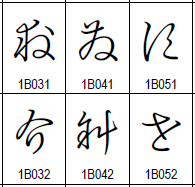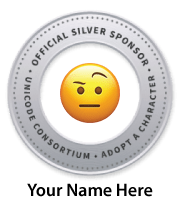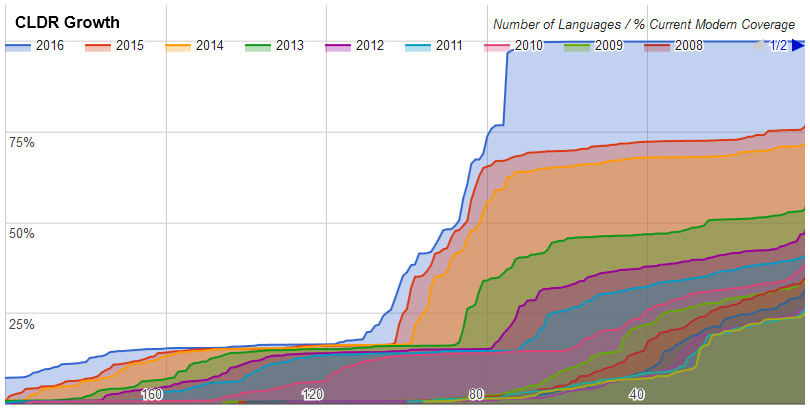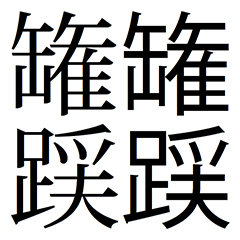
The Unicode Standard is the foundation for all modern software and
communications around the world, including all modern operating systems,
browsers, laptops, and smart phones—plus the Internet and Web (URLs, HTML,
XML, CSS, JSON, etc.). The Unicode Standard, its associated standards, and
data form the foundation for CLDR and ICU releases. Thus it is important to
ensure a smooth transition to each new version of the standard.
Unicode 10.0 includes a number of changes. Some of the Unicode Standard
Annexes have modifications for Unicode 10.0, often in coordination with
changes to character properties. In particular, there are changes to UAX
#14, Unicode Line Breaking Algorithm, UAX #29, Unicode Text Segmentation,
and UAX #31, Unicode Identifier and Pattern Syntax. In addition, UAX #50,
Unicode Vertical Text Layout, has been newly incorporated as a part of the
standard. Four new scripts have been added in Unicode 10.0, including Nüshu.
There are also 56 additional emoji characters, a major new extension of CJK
ideographs, and 285 hentaigana, important historic variants for Hiragana syllables.
Please review the documentation, adjust your code, test the data files, and
report errors and other issues to the Unicode Consortium by May 1, 2017.
Feedback instructions are on the beta page.
See
http://unicode.org/versions/beta-10.0.0.html for more information about
testing the 10.0.0 beta.
See
http://unicode.org/versions/Unicode10.0.0/ for the current draft summary
of Unicode 10.0.0.
About the Unicode Consortium
The Unicode Consortium is a non-profit organization founded to develop, extend
and promote use of the Unicode Standard and related globalization standards.
The membership of the consortium represents a broad spectrum of corporations and
organizations, many in the computer and information processing industry. Members
include: Adobe, Apple, EmojiXpress, Facebook, Google, Government of Bangladesh,
Government of India, Huawei, IBM, Microsoft, Monotype Imaging, Netflix, Sultanate
of Oman MARA, Oracle, Rajya Marathi Vikas Sanstha, SAP, Symantec, Tamil Virtual
University, The University of California (Berkeley), plus well over a hundred
Associate, Liaison, and Individual members. For a complete member list go to
http://www.unicode.org/consortium/members.html.




 The Unicode Standard is the foundation for all modern software and
communications around the world, including all modern operating systems,
browsers, laptops, and smart phones—plus the Internet and Web (URLs, HTML,
XML, CSS, JSON, etc.). The Unicode Standard, its associated standards, and
data form the foundation for CLDR and ICU releases. Thus it is important to
ensure a smooth transition to each new version of the standard.
The Unicode Standard is the foundation for all modern software and
communications around the world, including all modern operating systems,
browsers, laptops, and smart phones—plus the Internet and Web (URLs, HTML,
XML, CSS, JSON, etc.). The Unicode Standard, its associated standards, and
data form the foundation for CLDR and ICU releases. Thus it is important to
ensure a smooth transition to each new version of the standard. Proposed Update Version 5.0 of
Proposed Update Version 5.0 of  The Unicode Consortium has posted a new issue for public review and comment.
The Unicode Consortium has posted a new issue for public review and comment.

